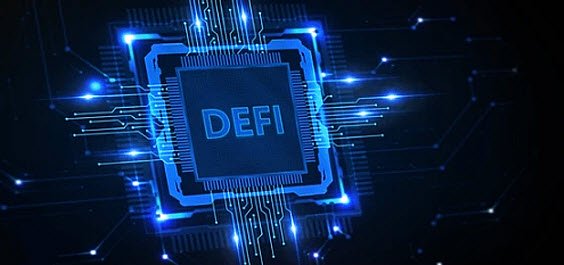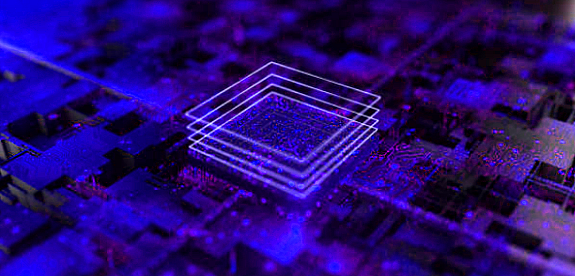Accredited InvestorsAltcoinAnatoli UnitskyAnti-Money Laundering (AML) In CryptoAPIArbitrageArtCoin TokenArticle DirectoryASICAuction Terminology GlossaryBasics of Stock Market InvestingBear MarketBest Crypto Payment Provider In the WorldBitcoinBlockchainBlockchain ConfirmationBlockchain Consensus MechanismBlockchain ForkBlockchain GlossaryBored Ape Yacht ClubBuild a Business That OutperformsBull MarketBuying SkyWay SharesByzantine Fault Tolerance (BFT) ExplainedCasascius CoinCentral Bank Digital Currency (CBDC)Centralized Crypto ExchangeCoinCoinsetCold WalletCollateralCommodity Futures Trading Commission (CFTC)Cross-Chain TechnologyCRUCrypto ExchangeCrypto GlossaryCrypto JokesCrypto Terms to KnowCrypto TickerCryptocurrencyCryptographyCryptojackingCryptounit BlockchainCryptounit GlossaryCryptounit ProgramdApp (Decentralized Application)Dead CoinDecentralized Exchange (DEX)Decentralized Finance (DeFi)Difference Between Bitcoin and EthereumDifferent Ways of Investing MoneyDigital CurrencyDistributed LedgerDo Your Own Research (DYOR)Dollar Cost Averaging (DCA)Dow Jones Industrial Average (DJIA)EncryptionERC-20ERC-721EthereumEvoScentFear Of Missing Out (FOMO)Fear, Uncertainty and Doubt (FUD)Fiat MoneyFNT Fintech CompanyGenesis BlockGlobal Unit PayGlossary of Banking TermsGlossary of Business TermsGlossary of Financial TermsHalvingHODLHot WalletHow Do I Start InvestingHow Rich is Satoshi Nakamoto?How to Create a BlockchainHow to Find Private InvestorsHow to Get Into FintechHow to Program Smart ContractsI Am Thrilled to Be a Part of This Global ProjectInitial Coin Offering (ICO)Initial Public Offering (IPO)Initial Token Offering (ITO)Innovation Basalt TechnologyInnovative Transportation TechnologiesInternational Bank Account Number (IBAN)Investing in Gold Mining StocksInvesting in Gold MiningJagerJoy of Missing Out (JOMO)Know Your Customer (KYC)LedgerLiquidity in CryptocurrencyMaker and Taker Fees in Crypto TradingMarket Capitalization (Market Cap)Meme CoinMetal Credit CardMetaMaskMillenials Now Have Access to Generational WealthMy Best Investment EverNew Digital EvolutionNFT GlossaryOff-Chain TransactionsOn-Chain TransactionsOpen Edition NFTPeer-to-Peer (P2P)Personal Loan GlossaryProbably the Best STO on the MarketProof of Stake (PoS)Real Estate Glossary of TermsReal Estate Investing GlossaryRebase TokenSecurities and Exchange Commission (SEC)Security Token ExchangesSecurity Token Offering (STO)Soulbound Decentralized Identities for Security TokensSoulbound ID Launch by Stobox Proves a SuccessSoulbound TokensStoboxStock Market GlossaryTestimonialsTether Platform and Token (USDT)UnitEx ExchangeUnitsky String TechnologiesUNTBUSDUValidatorWe Started Investing When We Were 25What are Blue Chip NFT?What are Blue Chip Stocks?What are Crypto Assets?What are Crypto Smart Contracts?What are CryptoPunks NFT?What are Digital Assets?What are Digital Collectibles?What are Gas Fees?What are Gas Wars?What are Hashmasks?What are Non Fungible Tokens?What are Non-Sufficient Funds (NSF)?What are Soulbound Tokens (SBT)?What are Stablecoins in Crypto?What are Transactions Per Second (TPS)?What are Utility NFTs?What are Utility Tokens?What Does Burning Crypto Mean?What Does Diamond Hands Mean?What Does Paper Hands Mean?What Does To The Moon Mean?What Does WAGMI Mean?What Happened to Satoshi Nakamoto?What is a 51% Attack?What is a Baby Boomer?What is a Backlink?What is a Banner?What is a Barcode?What is a Bid-Ask Spread in Crypto?What is a Block in Blockchain?What is a Block Reward?What is a Blockchain Address?What is a Blockchain Node?What is a Blockchain Oracle?What is a Blog?What is a Bond?What is a Bot?What is a Broker?What is a Business Accelerator?What is a Cash Cow?What is a Commercial Bank?What is a Commodity?What is a Con?What is a Credit?What is a Credit Limit?What is a Credit Rating?What is a Crypto Airdrop?What is a Crypto Bridge?What is a Crypto Scam?What is a Crypto Token?What is a Crypto Wallet?What is a Crypto Whale?What is a Crypto Winter?What is a Cryptocurrency Public Ledger?What is a Cryptocurrency Roadmap?What is a DAO?What is a Dark Pool?What is a Day Trader?What is a Dead Cat Bounce?What is a Default?What is a Derivative?What is a Digital Credit Card?What is a Fiscal Quarter?What is a Fungible Token?What is a Governance Token?What is a Grace Period?What is a Hard Fork?What is a Hot Wallet?What is a Hybrid Blockchain?What is a Hybrid PoW/PoS?What is a Joint Account?What is a Market Cap?What is a Merkle Tree in Blockchain?What is a Mining Farm?What is a Nonce? What is a PFP NFT?What is a POS System?What is a Prepaid Card?What is a Private Blockchain?What is a Private Key?What is a Public Blockchain?What is a Public Key?What is a Reserve Currency?What is a Ring Signature?What is a Routing Number?What is a Rug Pull in Crypto?What is a Safe Deposit Box?What is a Satoshi?What is a Security Token?What is a Seed Phrase?What is a Shitcoin?What is a Sidechain?What is a Soft Fork?What is a Spot Market?What is a State Bank?What is a SWIFT Code?What is a Tax Identification Number (TIN)?What is a Time Deposit?What is a Transaction Account?What is a Variable Interest Rate?What is a Virtual Assistant (VA)?What is a Virtual Card?What is a Virtual Currency?What is a Visa Card?What is a Whitelist in Crypto?What is a Whitepaper?What is Accounts Payable (AP)?What is AMA in Crypto?What is Amortization?What is an Accrual?What is an ACH Transfer?What is an Actuary?What is an Addendum?What is an Algorithm?What is an Angel Investor?What is an Annuity?What is an Asset?What is an ATM?What is an Atomic Swap?What is an Audit?What is an Avatar?What is an EIN?What is an Embargo?What is an Entrepreneur?What is an IDO (Initial Dex Offering)?What is an Interest Rate?What is an Internet cookie?What is an Investment Bank?What is an NFT Drop?What is an NFT Floor Price?What is an Ommer Block?What is an Orphan Block?What is an Outstanding Check?What is an Overdraft?What is Artificial Intelligence (AI)?What is B2B (Business-to-Business)?What is B2G (Business-to-Government)?What is Bartering?What is Bitcoin Dominance?What is Bitcoin Pizza Day?What is Blockchain Immutability?What is Blockchain Used For?What is BRICS?What is Business-to-Consumer (B2C)?What is C2C (Customer to Customer)?What is Capitalism?What is Catfishing?What is CFD Trading?What is Check Kiting?What is Cloud Mining?What is Communism?What is Content Marketing?What is Decentralization in Blockchain?What is DeFi in Crypto?What is Delisting?What is Depreciation?What is Digital Marketing?What is Diversification?What is Double Spending?What is Dumb Money?What is Dumping?What is Earnings Per Share (EPS)?What is Economics?What is Email Marketing?What is Equity?What is Etherscan?What is Fintech?What is Foreign currency?What is Forex?What is Fundamental Analysis (FA)?What is GameFi?What is Generative Art NFT?What is Gwei?What is Hard Currency?What is Hash Rate?What is Hashing in Blockchain?What is Inflation?What is Initial Game Offering (IGO)?What is Interest?What is Interest Income?What is Mainnet?What is Mastercard?What is Metaverse in Crypto?What is Mining in Cryptocurrency?What is Minting NFT?What is Mobile Banking?What is Money Laundering?What is NFT Alpha?What is NFT Metadata?What is NFT Rarity?What is NGMI Meaning?What is Nominal Interest Rate?What is Online Banking?What is Open-End Credit?What is OpenSea NFT Marketplace?What is Personal Identification Number (PIN)?What is Play-to-Earn?What is Polygon?What is Proof of Authority (PoA)?What is Proof of Work (PoW)?What is Public Key Cryptography?What is Pump and Dump?What is Quantum Computing?What is Refinancing?What is Retail Banking?What is Ripple?What is Sharding?What is Slippage in Crypto?What is Smart Money?What is Solvency?What is Soulbound ID?What is SSL?What is Staking in Cryptocurrency?What is Technical Analysis (TA)?What is Testnet?What is the Ask Price?What is the Better Business Bureau (BBB)?What is the Bid Price?What is the Dark Web?What is the InterPlanetary File System (IPFS)?What is the Gold Standard?What is the Lightning Network?What is the Prime Rate?What is the Sandbox?What is the Secondary Market?What is the World Bank?What is Tier 1 Capital?What is Tokenomics?What is TRC-20?What is Universal Banking?What is Unspent Transaction Output (UTXO)?What is Usury?What is Volatility in Crypto?What is Wash Trading?What is Web3?What is Whisper?What is XRP?What is Zero-Knowledge Proof (ZKP)?Who is Beeple?Who is Satoshi Nakamoto?Who is Vitalik Buterin?Why Tokenization is a Safe HavenWhy You Should Try Your Hand at Trading
What is Blockchain Immutability?
- Home
- Blockchain Glossary
- What is Blockchain Immutability?
One of the key benefits that blockchain advocates emphasize is the capacity of a blockchain ledger to maintain an unchanging, indestructible, and permanent record of transactions.

This immutability feature has the potential to revolutionize the audit process, making it a fast, effective, and economical procedure. Moreover, it can enhance the reliability and integrity of the data that businesses utilize and exchange on a daily basis, thereby promoting greater trust.
What is Blockchain Immutability?
In computer science, immutability refers to the property of an object that cannot be changed once it is created. This is a key feature of blockchain technology, where immutable transactions ensure that the stored data cannot be manipulated, replaced, or falsified by any entity. As a result, blockchains offer a high level of data integrity, and historical transactions can be audited at any time.
Blockchains that use proof of work (PoW) are often referred to as immutable ledgers, where all data is permanent and cannot be altered or replaced. However, while blockchains are highly immutable, they are not perfectly immutable. For example, in a successful 51% attack, a PoW blockchain's history of transactions could be altered.
Forking is another way in which a blockchain's contents can be changed if there is sufficient community support for the fork. Additionally, transactions need to reach practical finality before they are considered complete by most merchants and exchanges.
Despite these fringe cases, cryptocurrencies using blockchain technology achieve an enviable level of immutability compared to other forms of digital money. Developers have taken many measures to ensure that these cryptocurrencies function as reliable and unchangeable ledgers without needing to trust a central authority to keep records straight.
How Blockchain Immutability is Achieved?
The immutability of blockchain is achieved through cryptographic hashing. This technique uses an encryption algorithm to generate a unique hash value of fixed length from any plaintext input, making it nearly impossible to reverse.
For instance, the SHA-256 hashing algorithm would produce a 64-character hexadecimal number from the input "the majestic eagle soars high above the rugged mountains". This same algorithm will always produce the same output for any given input.
The hash value can be used as a digital signature to ensure data integrity. By comparing the hash value of received data with the original fingerprint, we can detect any tampering that occurred during transmission.
It's worth noting that immutability does not guarantee that data cannot be altered, but rather ensures that any alteration to data on a blockchain will have consequences.
Benefits of Blockchain Immutability
The advantages of immutability on blockchains include enhanced security, data integrity, simplified auditing, and prevention of fraudulent activities.
In traditional database systems, unauthorized access to data can result in its corruption or loss. However, in a blockchain, any modification to data requires the consensus of all network nodes, making data loss impossible and ensuring immutability.
The immutability of blockchain guarantees the preservation of data integrity, as the chain's integrity can be verified by re-calculating the hash values. Any differences between block data and corresponding hash values indicate fraudulent transactions. Immutability enables organizations to generate a tamper-proof ledger, facilitating seamless audits and preventing complications.
Cryptographic hashing is responsible for the immutability of blockchain, as any attempt to modify a chain disrupts the entire network.
Although blockchains are not entirely immutable and can undergo changes in rare and exceptional circumstances, they are considered practically immutable due to their high degree of resistance to modification by developers or users. In proof of work blockchains like Bitcoin, their immutability increases with an increase in mining power, making larger blockchains with more community support more resistant to modification than smaller ones.
Public blockchains, particularly in monetary systems, provide the most significant level of transparency and immutability that we have achieved thus far. As these blockchains expand and receive more support, their immutability will only continue to strengthen.
Related Articles

What is Proof of Authority (PoA)?
The PoA mechanism is considered centralized due to the preapproval of validators. Its purpose is primarily to enhance the efficiency of centralized systems, with high bandwidth but also with concerns about immutability.

Decentralized Finance (DeFi)
Immutability - Once verified and uploaded to the blockchain, blockchain records are safe, permanent, and cannot be deleted or altered.

What is a Private Blockchain?
Private blockchains enable organizations to keep sensitive information secure while still benefiting from the transparency and immutability of blockchain technology.

What is Hashing in Blockchain?
Hashing plays a crucial role in securing the blockchain's data and ensuring its immutability. The cryptographic properties of the hash function make it...

What is a Block in Blockchain?
This ensures the integrity and immutability of the Blockchain, providing a secure and transparent record-keeping system for...

On-Chain Transactions
If security, immutability, and a validated transaction are required, an on-chain transaction is likely to be preferable; but, if low transaction fees and speed are...
- Home
- Blockchain Glossary
- What is Blockchain Immutability?